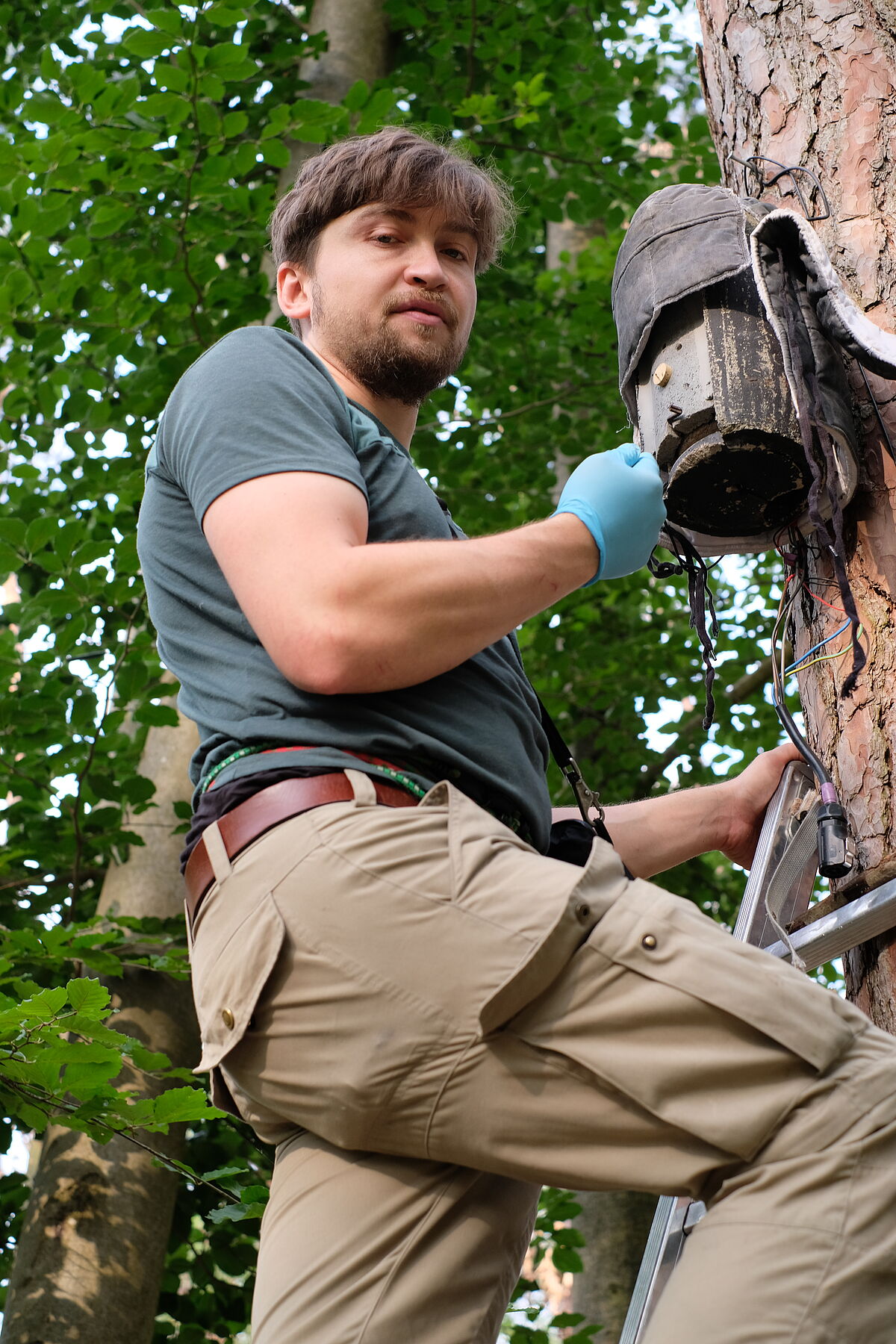
Janis Wolf
Applied Zoology and Nature Conservation
Loitzer Str. 26
17489 Greifswald
Tel.: +49 (0)3834 420-4275
Fax: +49 (0)3834 420-4252
janis.wolf(at)uni-greifswald(dot)de
Research Interests
Population persistence of Bechstein's bats in climate change conditions
Bats of the temperate zone evolved several behaviours that make them especially interesting to study in the context of global warming. To overcome periods of unfavourable conditions or a reduction in food availability, bats can use torpor, a state of lowered body temperature and reduced metabolic rates. To share energetic costs in the roost, some species also engage in social thermoregulation, the cooperative maintenance of body temperature. In addition, some species regularly switch roosts during the breeding season, to reduce predation pressure and parasitic load, but also to adapt to different ambient temperatures. To what extent could such adaptions allow bats to cope with changing climatic conditions?
Within the RESPONSE project A3, we investigate how climate change will affect several maternity populations of the Bechstein’s Bat (Myotis bechsteinii) in southern Germany. The previous cohort of the same project found that increased ambient summer temperatures affect the growth of juveniles in this species, resulting in larger adult body sizes (Mundinger et al. 2021). However, it remained unclear if this increase in body size is a direct effect of temperature on body growth or rather due to indirect effects, e.g. an increased insect availability in warmer conditions. With a field experiment that allowed us to actively manipulate roost temperatures during the growth phase of the juveniles, we can show that the increase in body size indeed is a direct consequence of temperature, independent of other cofounding factors (Mundinger & Wolf et al., submitted). We argue that warmer roosts allow to minimise metabolic costs without using torpor and it’s adverse effects during the growth phase, like reduced milk production and inhibited body growth.
With a second field experiment, I further investigate these results by comparing the metabolic rate and frequency of torpor use in heated versus unheated roosts. For this, I measured oxygen consumption within the first five weeks after birth and at the same time monitor the roosting groups with a mini thermal imaging camera.
To predict whether the populations of M. bechsteinii can persist in expected climatic conditions, in another project, I plan to apply Integrated Population Models (IPMs). By using this modern population modelling approach in conjunction with existing long-term field data spanning more than 25 years, I expect to obtain accurate estimates of demographic parameters like productivity and survival rates. These parameters then form the basis for analyses of the population viability under different climate change scenarios.
Urbanisation and invasive species
In addition to studying the effects of climate change, I am also interested in other anthropogenic impacts on biodiversity. In particular, macroecological approaches and data analyses to assess the contribution of urbanisation and the impact of invasive species have been the focus of my research to date.
Publications
§ indicates shared first authorship
- Wolf J.M., Lehmann P. & Kerth G. (2025). Field respirometry in a wild maternity colony of Bechstein's bats (Myotis bechsteinii) indicates high metabolic costs above but not below the thermoneutral zone. Journal of Experimental Biology (jeb.249975). https://doi.org/10.1242/jeb.249975.
- Wolf J.M. & Kerth G. (2024). Optimally warm roost temperatures during lactation do not improve body condition in a long-lived bat. Biology Letters 20: 20240346. https://doi.org/10.1098/rsbl.2024.0346.
- Mundinger C.§, Wolf J.M.§, Gogarten J.F., Fierz M., Scheuerlein A. & Kerth G. (2023). Artificially raised roost temperatures lead to larger body sizes in wild bats. Current Biology 33. https://doi.org/10.1016/j.cub.2023.08.004.
- Wolf J.M., Jeschke J.M., Voigt C.C. & Itescu Y. (2022). Urban affinity and its associated traits: A global analysis of bats. Global Change Biology 28: 5667–5682. https://doi.org/10.1111/gcb.16320.
- Wolf J.M., Haase D. & Kühn I. (2020). The functional composition of the neophytic flora changes in response to environmental conditions along a rural-urban gradient. NeoBiota 54: 23–47. https://doi.org/10.3897/neobiota.54.38898.
- Kühn I., Wolf J.M. & Schneider A. (2017). Is there an urban effect in alien plant invasions? Biological Invasions 19: 3505–3513. https://doi.org/10.1007/s10530-017-1591-1.
